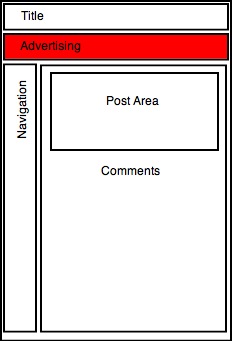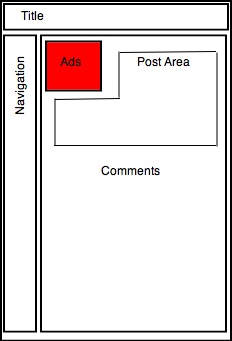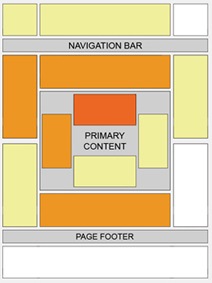If you run adsense on your blog or website you have probably read about how to increase your income almost overnight. Many of these ideas might seem ridiculous at first, but then you go ahead and try them anyway to see if you can stretch your visitors for that extra dollar.
For your convenience, I have created a list of the common suggestions given to those who want to increase their income and stated why or why they aren’t a myth. I have also listed the “Ugliness factor” which shows on a 0-10 scale how much the “cure” will effect your pages look and feel for the worst.
Block MFA ads from your website
Myth or Cure: Myth.
AdSense detects the highest paying ads for each webpage. If an MFA is appearing on your site it is because it is the highest bidder. Blocking the MFA will only result in lower earnings overall.
Ugliness factor: 0
Look for low paying pages and remove AdSense
Myth or Cure: Cure.
If a page on your website consistently receives low paying ads while the rest of your site receives higher paying ads, it is possible that this page is bringing your other pages down. However, if this page has high traffic compared to your other pages, your earnings will be less without it. So choose wisely.
Ugliness factor: 0
Use the heatmap to place your ads
Myth or Cure: Cure.
Heatmaps are different for every website, but the general line of sight when coming to a new page is from top left to the middle and slowly to the right. If you place an ad in a ‘red’ spot you will earn more. To find out your own sites heatmap, check out CrazyEgg or you can look at a general heatmap for a quick reference. The ugliness factor depends on where, what, and how many.
Ugliness factor: 5
Place the most visible ad highest in your HTML file
Myth or Cure: Cure.
AdSense places the highest paying ad at the top of the highest ad within your HTML file. If you must, use CSS to make sure the highest paying ad is also the most visible.
Ugliness factor: 0
Use adlinks under your header
Myth or Cure: Cure.
The header is a high traffic area when it comes to the heatmap. So why not place an ad directly where the visitor will look? Adlinks are less intrusive because they are smaller but still ugly, especially in the middle of a layout.
Ugliness factor: 9
Blend the ads
Myth or Cure: Cure.
As long as you don’t create your entire website to look exactly like the ad (including the font-family and font-size) this should increase your earnings.
Ugliness factor: 2
Use complimentary colors for the ads
Myth or Cure: Cure.
Like blending ads, this will not kill the look and feel of your website. Using complimentary colors will give your visitors more of a hint that they are looking at an ad as opposed to just blending–which may or may not be better than blending the ad.
Ugliness factor: 2
Use obscure colors for the ads
Myth or Cure: Myth.
Using obscure colors compared to your layout is never the way to go. It is not only ugly, but will annoy your visitors so much they won’t return.
Ugliness factor: 10
Turn on image ads
Myth or Cure: Cure.
Choosing “Text and image ads” will give Google a wider range of ads to choose from when displaying the best performing ad. The downside? Not all websites want to show images.
Ugliness factor: 5
Use medium and large rectangles
Myth or Cure: Cure.
Medium and large rectangles have the largest inventory because they not only include image ads, but also video ads. They are also the easiest to see and generally look the best within content.
Ugliness factor: 2
Review products
Myth or Cure: Cure.
When it comes to getting money, reviews are the best way to get it (besides selling the product yourself). By reviewing a specific product you entice visitors to buy–offer them ads and they will click. Although, you might be better off placing an affiliate ad for the product instead of using AdSense.
Ugliness factor: 0
Place more ads on each page
Myth or Cure: Myth & Cure.
It depends on how many you are showing and how much content the page has. AdSense places the highest paying ads on the highest ad within your HTML source file. This means that the more ads you place the more low paying ads there will be, which will take away clicks from the other higher paying ones. So be sure not to place too many.
Ugliness factor: 5
Place less ads on each page
Myth or Cure: Myth & Cure.
It depends on how many ads you are showing. With less ads you will know visitors are clicking on the highest paying ad possible. However, the less ads the less visibility they get, meaning less clicks. This could go either way.
Ugliness factor: 0
Remove low performing pages
Myth or Cure: Cure.
Low performing pages (as in low CPM and low earnings overall) can hurt you with smart pricing. By removing low performing pages, the higher performing ones will most likely earn more.
Ugliness factor: 0
Place an ad block below content pages
Myth or Cure: Cure.
If you have plenty of content adding an ad block below it may improve your earnings. This is because someone who reads an entire article is more likely to be persuaded and willing to click and buy.
Ugliness factor: 4
Use h1s, h2s, title tags
Myth or Cure: Cure.
Using header tags and the title tag will increase earnings. Not only will this give you more visitors through search engines, but it will also tell Google more coherently what your page is about so they can show more relevant ads.
Ugliness factor: 0
Articel written by : impNERD






 Ad positioning is vitally important to the performance of ad units like AdSense.
Ad positioning is vitally important to the performance of ad units like AdSense.



